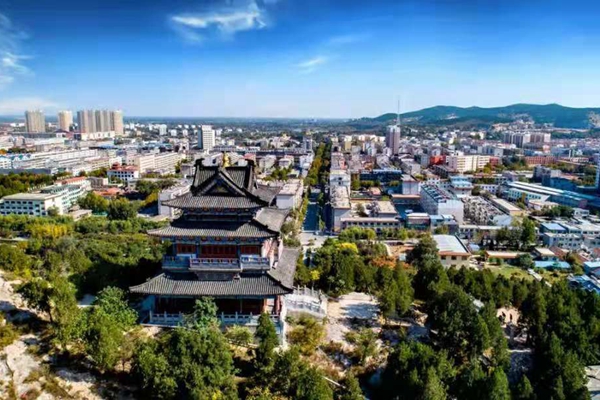Liangshan county

Liangshan county [Photo/Official WeChat account of the information office of the Jining municipal government]
Name: Liangshan
Population: 730,000
Area: 965 square kilometers
Geography
Liangshan county is located in the southwest of Shandong province, at the junction of Shandong and Henan provinces, and borders on the cities of Jining, Tai'an, Heze and Puyang.
Administrative divisions
The county consists of 13 towns, one provincial economic development zone, one scenic spot, and 672 villages.
Culture and history
During the Xia and Shang dynasties (c.21st century-11th century BC), ancestors flourished in the area, leaving behind the symbols of ancient civilizations such as the Qinggudui and Jiagudui. During the Western Han dynasty (206 BC-24), Liangshan Mountain was a royal hunting ground, a fiefdom of Prince Xiao of Liang, and was given its name after the death of Prince Xiao of Liang, who was buried at the foot of the mountain.
It became one of the country's most popular Buddhist resorts during the Sui and Tang dynasties (581-907). From the Five Dynasties and Ten Kingdoms (907-960) to the Northern Song Dynasty (960-1127), the Yellow River flooded again and again, and the waters converged at the foot of Liangshan Mountain, forming a 1,300-kilometer-wide water basin. At the end of the Northern Song Dynasty, Song Jiang gathered soldiers to take advantage of the rugged water basin of Liangshan Mountain and eliminated bandits. During the reign of Emperor Jiajing in the Ming Dynasty (1368-1644), a Buddhist master named Xizhu in Donglu led an army of 3,000 monks to fight the Japanese invaders along the eastern seaboard, and then gave lectures at the Faxing Temple on Liangshan Mountain, making the temple famous.
Travel resources
Liangshan scenic area has charming natural landscapes and attractions, such as Liangshan village, Jingzhong Temple and Xinghua village. Confucian, Buddhist and Taoist landscapes are located at the southern foot of the snow-capped peaks, with landmark buildings such as Liantai Temple, Faxing Temple and the tombstone of Xizhu master. Liantai Temple and Faxing Temple are Buddhist holy lands that were both founded in the Tang Dynasty (618-907).
